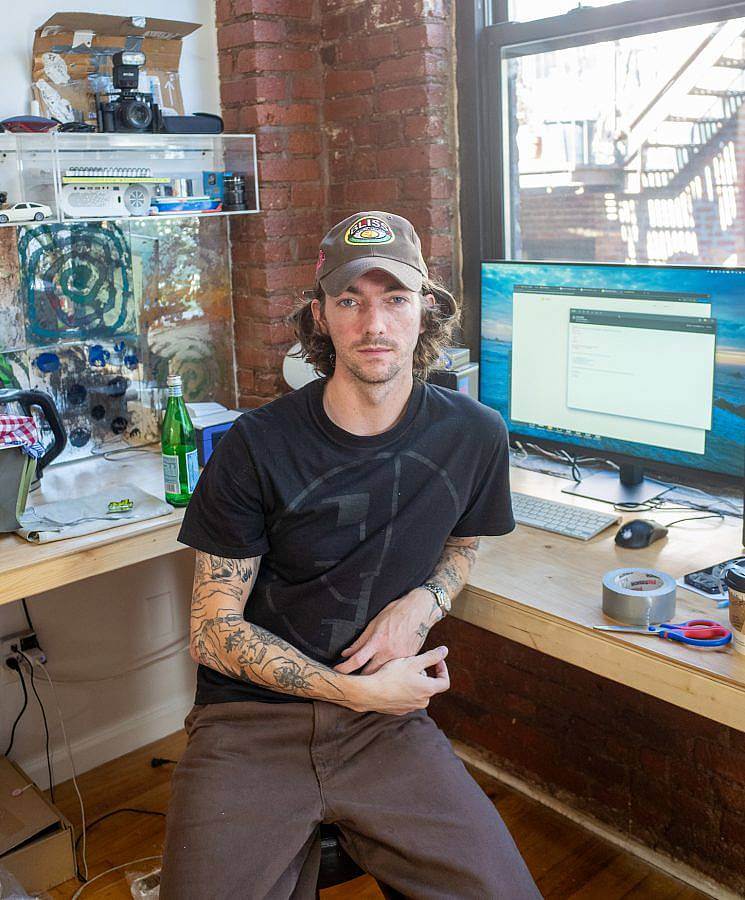Tell us a little bit about yourself and what you do.
I am a designer living in New York City. I typically don’t like how vague that sounds but I think it encompasses what I do without it sounding pretentious. Currently the huge bulk of my time is dedicated to working on my brand, and a large part of that is just designing and printing t-shirts. All the printing and finishing for the t-shirts gets done in the studio, so it can be a time-intensive process. We are beginning to move in a more serious direction and offer some cut & sewn pieces such as denim, hoodies, and trousers — trying to legitimize it as a brand instead of just as a t-shirt project.
Your creative output spans a variety of media, does working with one medium influence the work you do with a different one?
Yea of course. Everything is connected. You can always find wisdom in the work you do that can apply to other things. I think it is important to be versatile, it helps your brain solve problems.

Are there any influences that are core to your practice?
The German principle of Gesamtkunstwerk or total work of art is interesting to me. It basically refers to creating a comprehensive artwork and paying attention to every detail of the production and not just one aspect. So instead of only focusing on creating a great graphic on a t-shirt, picking out the perfect blank, adding a custom woven label, adding stickers, and creating the entire experience. I think this is usually used in a grander scope for architectural works, but it’s something I’m conscious of when I am creating.
What is your current studio or workspace like?
My current studio is a converted industrial space in Bushwick. It’s very nice, and a huge upgrade for me over my last studio. Lots of space for me to be messy and spread out.
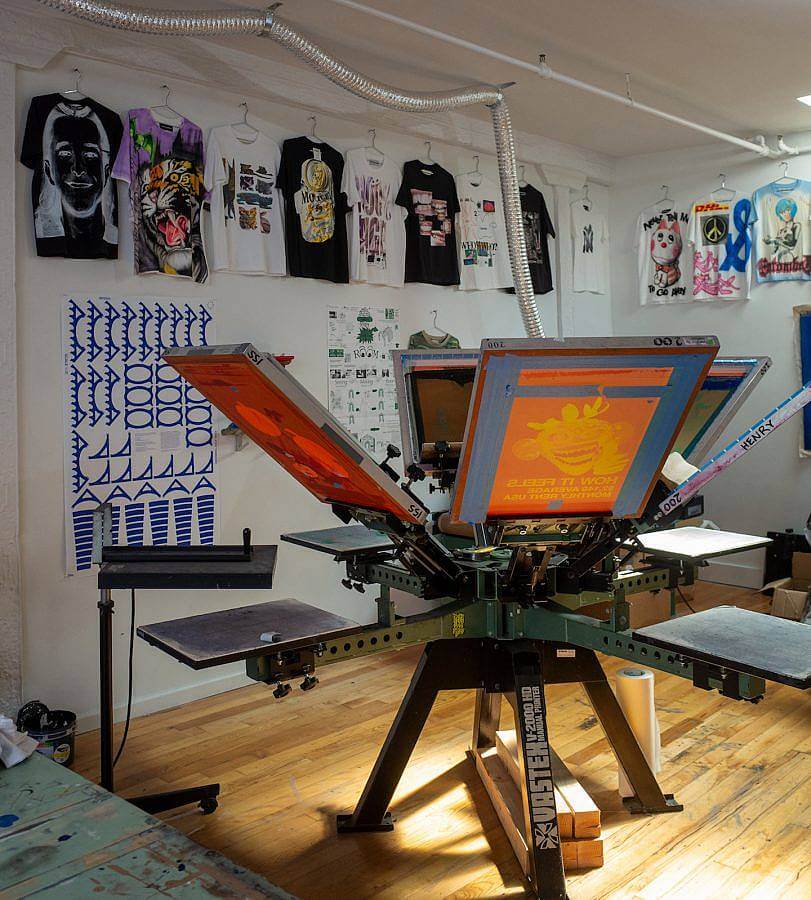
Which medium did you first begin working with, and how have your skills developed with other mediums since?
I think the first medium I really excelled at was just drawing, pen or pencil on paper. In university we would have to do hundreds of pages of drawings. I typically don’t draw as much now but I really enjoy painting with an airbrush, it’s very versatile and allows you to render things very realistically.
Is there a through line or a commonality that you see in the different projects you produce? Or does each project exist independently of one another?
I would like to think that everything is independent, but I think just by the virtue of me having created it there is some sort of ephemeral through-line. That being said the only thing that I focus on is creating things that I personally like, there isn’t an intentional world-building design process or anything.
How has your experience as a creator changed since relocating to New York from Seattle?
Everything is more serious now. I have a lot more confidence in my work. I’m not sure what it is about New York – maybe that it’s so expensive to just exist here – but it seems to legitimize your work in a way that other cities don’t. Even though I could do everything I’m doing now from basically anywhere in the world, something about it being in New York City makes it that much more exciting. I’ve talked to other artists about this before, and of course there is basically unlimited resources for artists here, but there seems to be a secret energy or aura about the city that can transform your work.

What is one of the bigger challenges you and/or other artists are struggling with, and how do you see it developing?
There’s a lot. Exposure is a very tough one. I got lucky with my following and the fact that my work is kind of meme-y so it lends itself well to social media. But there is a huge barrier for more serious artists to get their work seen. Whatever the algorithm is or whoever is deciding what gets seen doesn’t seem to favor more serious work, which kind of pushes artists to make things that cater to that algorithm. There’s always a lingering feeling that you have to create things for this invisible sorting mechanism and not just for yourself.
What kinds of things are influencing your work right now?
I think I’m largely just influenced by the same things everyone else is. The internet is a great source of imagery, but since it’s all so algorithmically oriented, everyone sees the same stuff. It can be hard to dig up rare sources of inspiration. I’ve found myself trying to go back to the classics, books, taking my own photos, etc.
What do you look for when you source imagery?
I just grab things that stand out to me. I love bootlegging imagery, but I think it gets a little hairy sometimes. You have to be careful. I’m very into medieval stuff right now like woodblock prints, natural patterns, plaid, plants, things like that.
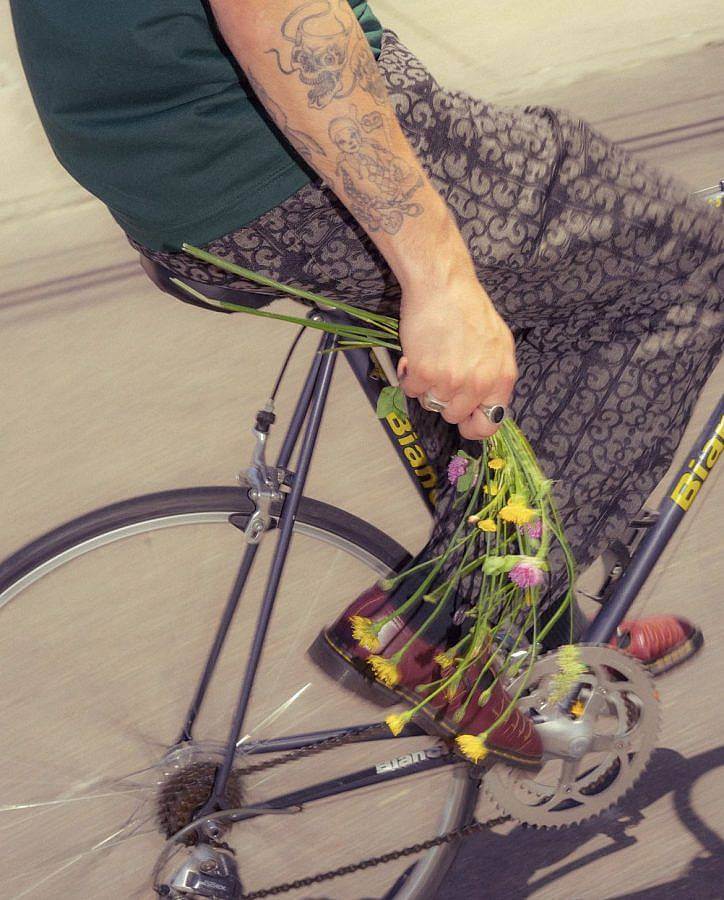
Was there an important lesson you learned earlier in your career?
You gotta treat your customers as nicely as you can. It can be frustrating being asked the same question hundreds of times, especially when the answer seems like it would be obvious. But without people supporting you and buying the things you’re creating you wouldn’t be able to continue. Having good customer service and being kind goes a long way to creating a loyal and excited customer base.
Do you have a dream collaboration, whether that be with a brand or with another artist?
I would love to collaborate with Merrell or Keen or some other hiking-shoe-esque brand. I was really into the idea of designing shoes in university and I still love the idea of being able to design a shoe. Being able to do a graphic for a huge brand like Supreme would also be awesome.
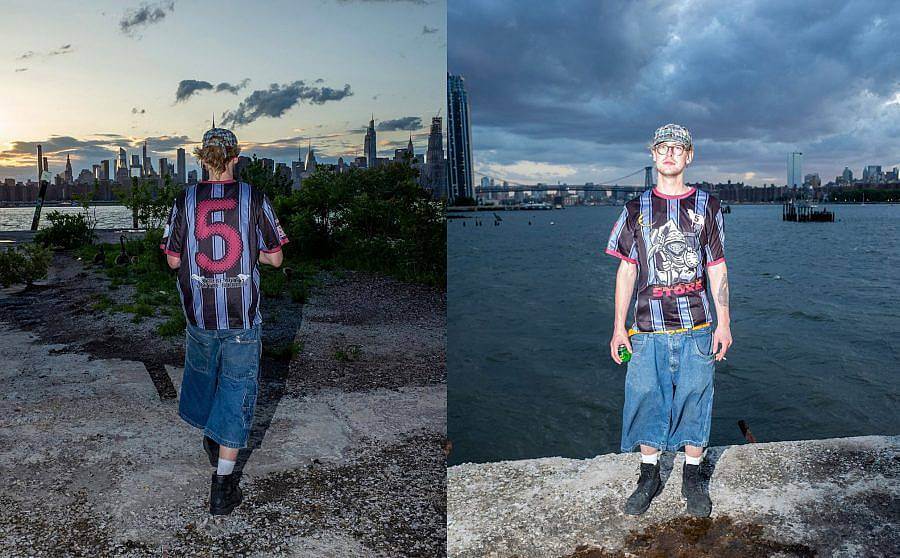
What are some of the recent, current or upcoming projects you are working on?
Just more clothes. More leather jackets. I’m not really sure where things are going but I just work on whatever is exciting in the moment.
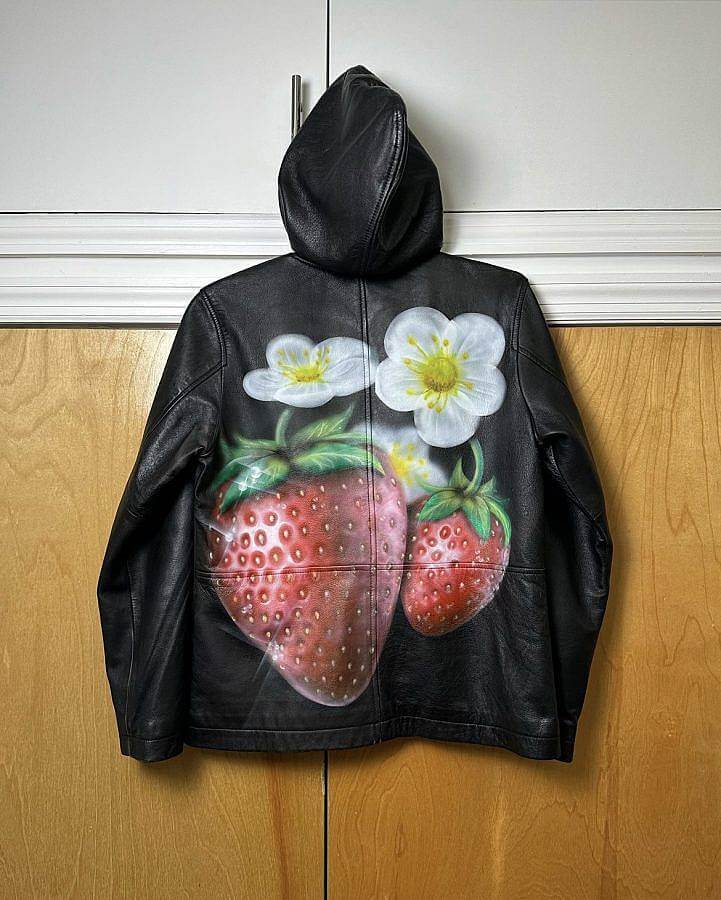
Interviewed by Luca Lotruglio.
